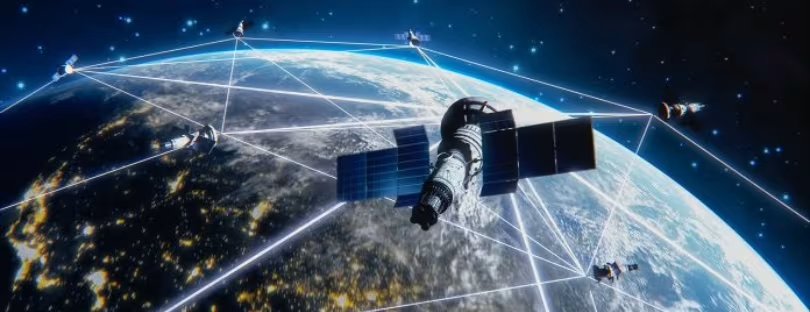
Kaleido Forecasts 30M Satellite IoT D2D Connections by 2030 Amid Industry Uncertainty
A new report by connectivity research firm Kaleido Intelligence forecasts a sharp rise in direct-to-device (D2D) IoT satellite connections — from fewer than 500,000 at the end of 2025 to 30 million by 2030. D2D technology enables standard cellular devices to connect directly with satellites, using either terrestrial spectrum or specialized non-terrestrial network (NTN) chipsets.
While the market is still in its early stages, sectors like asset tracking, utilities, and agriculture are driving most current deployments. However, the report notes that business model challenges, particularly high airtime costs, are limiting broader adoption despite growing enterprise interest.
At the same time, the surge in satellite launches — particularly in Low Earth Orbit — raises serious sustainability concerns, with potential long-term risks for operators. Smartphone-based D2D connectivity is also growing, but limited by device constraints and low revenue potential in the near term.
Business Model Innovation Required
The new research, Cellular-Satellite Communications: Opportunities & Outlook 2025, highlighted that today, the market for D2D communications for IoT use cases remains nascent, with Skylo leading within the NTN space. Key use cases for D2D currently focus around low-bandwidth, non-critical applications with asset tracking, energy and utilities (including oil and gas) in addition to agriculture accounting for around 60% of connections today.
Nevertheless, while IoT represents a potentially high addressable market for uptake, with 51% of IoT enterprises and OEMS viewing it as a viable solution for WAN connectivity, economics in terms of airtime pricing pose significant barriers, which will continue to slow market adoption for the foreseeable future.
Unsustainable Practices Pose a Systemic Risk
Since 2015, satellite payloads launched into orbit have increased by some 1105%, with almost all communications payloads targeting LEO (Low Earth Orbit) altitudes, where latency reduction provides important benefits. Over the coming years, Kaleido expects at least 60,000 satellites to occupy LEO orbit. Nevertheless, analysis by Kaleido highlights a lack of homogenised global legislation surrounding sustainability in space, the increasing politicisation of sovereign constellations in addition to the as-yet untested capabilities of several LEO players to avoid collisions in space and deorbit safely at altitudes over 500km may represent a systemic risk to the industry in terms of reversing the downward trend of launch and maintenance costs for satellite network operators. Here, careful due diligence must be applied in terms of partner selection.
Smartphones Offer a Limited Opportunity
Smartphone D2D connectivity provides an equally interesting area of development for the market, with 6 million users expected by the end of 2025. Nevertheless, inherent device constraints in terms of antenna design and radio power will reduce the scope of use cases for such devices at least until satellite capacity is considerably increased. In tandem with the transient demand for satellite connectivity in this segment, monthly ARPU is unlikely to reach much higher than $6 per month on a global basis by 2030.
Steffen Sorrell, Research Author at Kaleido Intelligence
In a similar fashion to how OEM subsidies for satellite connectivity can drive traction in the smartphone market, the same principles can be applied to IoT. Here, margins achieved through consumer data breakage can be leveraged to drive IoT airtime pricing down, and present a more attractive offer for volume.
Final thoughts
While Kaleido Intelligence outlines a promising trajectory for satellite-based direct-to-device (D2D) IoT connections, realizing its full potential will require navigating economic, technical, and regulatory hurdles that continue to shape this emerging field. Compared to leaders like Skylo, which currently dominates the NTN space for low-bandwidth use cases, other players such as AST SpaceMobile and Lynk Global are pursuing more ambitious D2D strategies aimed at supporting direct-to-smartphone communications. Yet, these ventures face their own challenges — including regulatory approvals, scalability of ground infrastructure, and latency constraints.
Notably, recent filings with the FCC and ITU from companies like Starlink and Amazon’s Project Kuiper show a growing interest in blending traditional broadband LEO constellations with hybrid IoT or D2D capabilities. However, despite their scale and investment power, most of these projects still lack commercially viable D2D IoT offerings.
The market is moving, but the convergence of satellite and cellular will hinge on more than just technical feasibility. Pricing must align with the ultra-thin margins of IoT deployments, especially in industrial sectors. At the same time, regulatory clarity around LEO orbital traffic, spectrum coordination, and space debris mitigation will become increasingly critical. As noted in the ITU’s 2024 Satellite Regulation Report and echoed by the UN Office for Outer Space Affairs (UNOOSA), the sustainability of the satellite ecosystem is now a shared responsibility — not just for network operators, but for the global digital economy.
Ultimately, the success of satellite D2D IoT will depend on a delicate balance: enabling global coverage at scale while keeping both the business model and orbital environment sustainable. The next five years will be decisive in determining whether this technology can move beyond hype and pilot programs into mass deployment.










